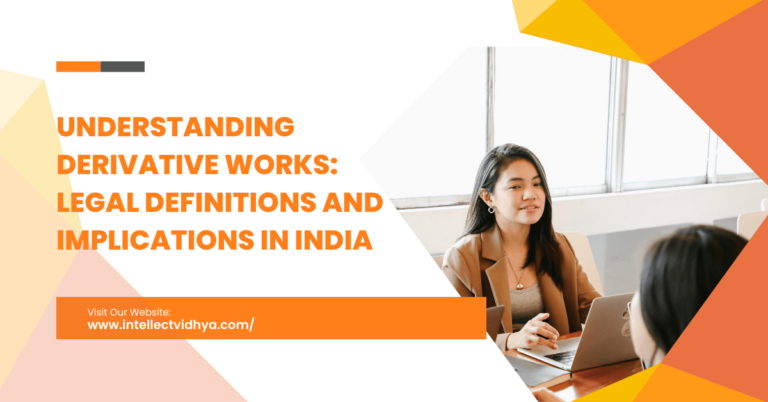In the realm of intellectual property rights, the concept of derivative works holds significant importance, particularly in the context of copyright law. A derivative work is a creation that is based on or derived from an original copyrighted work, thereby giving rise to a new work with its own set of rights and obligations. In India, the legal framework governing derivative works is outlined in the Copyright Act, 1957, and its subsequent amendments.
Definition of Derivative Works
As per the Indian Copyright Act, a derivative work is defined as a work that is created by adapting or translating an original literary, dramatic, musical, or artistic work. This includes, but is not limited to, adaptations in the form of cinematographic films, sound recordings, translations, abridgments, condensations, and arrangements.
Types of Derivative Works
Derivative works can take various forms, depending on the nature of the original work and the creative process involved. Some common types of derivative works include:
1. Literary Derivative Works:
– Translations of novels, poems, or plays into different languages
– Abridgments or condensations of longer literary works
– Sequels, prequels, or spin-offs based on original stories or characters
2. Dramatic Derivative Works:
– Film adaptations of plays or novels
– Stage musicals based on literary works or films
3. Musical Derivative Works:
– Cover versions or remixes of existing songs
– Arrangements or transcriptions of musical compositions for different instruments or ensembles
4. Artistic Derivative Works:
– Sculptures or paintings based on existing works of art
– Photographic reproductions or digital manipulations of artworks
5. Software Derivative Works:
– Modifications or enhancements to existing computer programs
– New software applications built upon existing code libraries or frameworks
Legal Implications
The creation of a derivative work requires permission from the copyright owner of the original work, unless it falls under the exceptions provided by the fair use or fair dealing provisions of the Copyright Act.
- Ownership and Rights – In India, the copyright in a derivative work vest with the author of the derivative work, subject to the subsistence of copyright in the original work. The author of the derivative work holds the exclusive rights to reproduce, distribute, perform, or display the derivative work, as well as to create further derivative works based on it.
- Infringement and Fair Use – The unauthorized creation of a derivative work without the consent of the original copyright owner constitutes copyright infringement. However, the Copyright Act provides for certain exceptions under the fair use doctrine, which allows the creation of derivative works for specific purposes, such as criticism, review, research, or private study, without infringing on the original work’s copyright.
- Moral Rights – In addition to economic rights, the original author of a work also enjoys moral rights, which include the right to claim authorship and the right to prevent any distortion, mutilation, or modification of the work that could be prejudicial to their honour or reputation. These moral rights extend to derivative works as well, ensuring that the integrity of the original work is maintained.
- Term of Protection – The term of copyright protection for a derivative work in India is generally the life of the author plus 60 years from the year following the author’s death. However, if the derivative work is a cinematographic film, the term of protection is 60 years from the year following the film’s first publication.
Case Study
The adaptation of Chetan Bhagat’s novel “Five Point Someone” into the hugely popular film “3 Idiots” generated significant controversy. While the movie was a commercial and critical success, it faced backlash for deviating substantially from the original novel’s narrative and themes.
Critics argued that by taking a broader, more mainstream approach, the film oversimplified the novel’s critique of the Indian education system and the struggles of IIT students. They accused the filmmakers of exploiting Bhagat’s work for commercial gain while failing to accurately represent its essence.
There were also concerns about the portrayal of certain characters, like the entirely new character of Rancho, and the exaggerated depiction of IIT life and the education system.
Despite these criticisms, “3 Idiots” sparked conversations about educational reforms and the pursuit of passion over societal expectations. However, the controversy highlighted the challenges of adapting works that tackle sensitive social issues, and the need for faithful and respectful representations of the source material.
Implications and Considerations
The concept of derivative works has far-reaching implications in various creative industries, including literature, music, film, art, and software development. It is crucial for creators and authors to understand the legal framework surrounding derivative works to avoid potential infringement issues and to protect their intellectual property rights effectively.
When creating a derivative work, it is advisable to obtain proper licenses or permissions from the original copyright owners to ensure compliance with the law. Additionally, consulting with legal professionals or intellectual property experts can provide valuable guidance on navigating the complexities of derivative works and ensuring that the creative process remains within the bounds of the law.
It is also important to note that the boundaries between original works and derivative works can sometimes be blurred, particularly in cases where the derivative work incorporates substantial new creative elements or transforms the original work in a significant way. In such cases, the derivative work may be considered a separate, original creation, subject to its own copyright protection.
Conclusion
In conclusion, derivative works play a vital role in the creative ecosystem, fostering adaptation, innovation, and cultural exchange. However, it is essential to strike a balance between encouraging creativity and protecting the rights of original authors. The Indian Copyright Act provides a comprehensive legal framework for regulating derivative works, ensuring that the rights of both the original creators and the authors of derivative works are safeguarded. By understanding the legal nuances and adhering to the principles of fair use and proper attribution, creators can navigate the realm of derivative works while respecting intellectual property rights.







